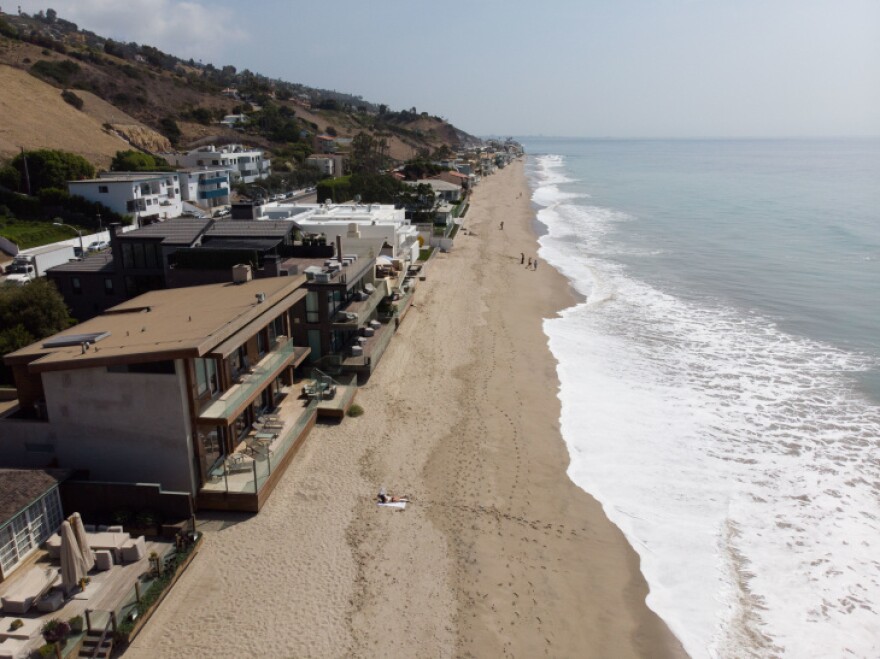Truth matters. Community matters. Your support makes both possible. LAist is one of the few places where news remains independent and free from political and corporate influence. Stand up for truth and for LAist. Make your year-end tax-deductible gift now.
Forecast: Coastal Flooding Is Going To Get A Lot Worse For California

A new study in Nature Scientific Reports says that the possibility of extreme flooding along U.S. Coastlines is going to double every five years, and that dangerously high water levels we now expect to see every 50 years will become:
- Annual occurrences by 2050
- Daily occurrences by 2100
The research was funded by USGS Coastal and Marine Hazards and Resources Program and reviewed before publication, including by two anonymous reviewers.
WHY IT MATTERS
Beaches, as well as homes, roads, wastewater treatment plants and other types of infrastructure along the coast are particularly vulnerable to sea level rise associated due to climate change. Hundreds of millions of people could be forced to move as their towns are threatened by encroaching waters. Infrastructure will have to be adapted and/or moved. Tourism and business will also suffer as beaches disappear.
CALIFORNIA PERSPECTIVE

The authors found that our coast, especially Southern California, will be particularly vulnerable to flooding in the coming years. Whether your favorite spot is going to flood, and when, depends on topography and the location of current infrastructure. Low lying areas with roads and homes close to the water are likely to fare worse than places that have giant cliffs between them and the water.
Meaning, it's not looking good for places like Venice and Cardiff.
A previous U.S. Geological Survey study found that between half and two thirds of California's beaches could disappear by 2100.
WHAT'S BEING DONE ABOUT IT?
There are heated debates around how to respond, with some advocating for giant sea walls to protect from erosion, and others saying we should allow waters to naturally encroach further inland. The former will lead to loss of beaches and coastal access, while the latter will mean a loss of beaches, homes and roads, but with an opportunity to allow new beaches to form and infrastructure to be built for our new reality. Outcomes will vary greatly depending on location.
BIG PICTURE SOLUTION: Curb our carbon emissions.
EXTRA CREDIT: USGS built an online tool that lets you visualize how much of an impact sea level rise and coastal storms could have on your community through the end of the century.
READ MORE OF OUR REPORTING:








